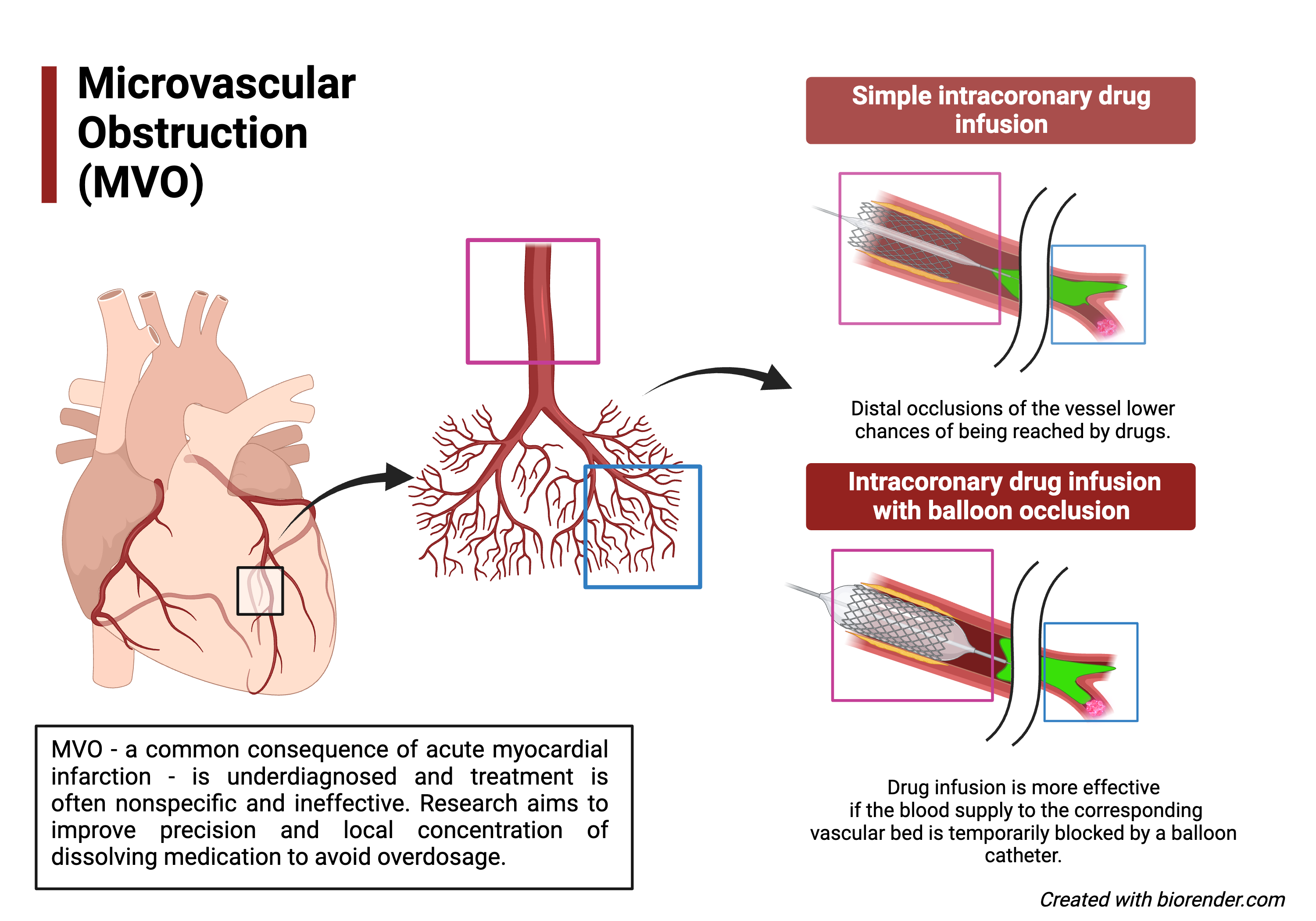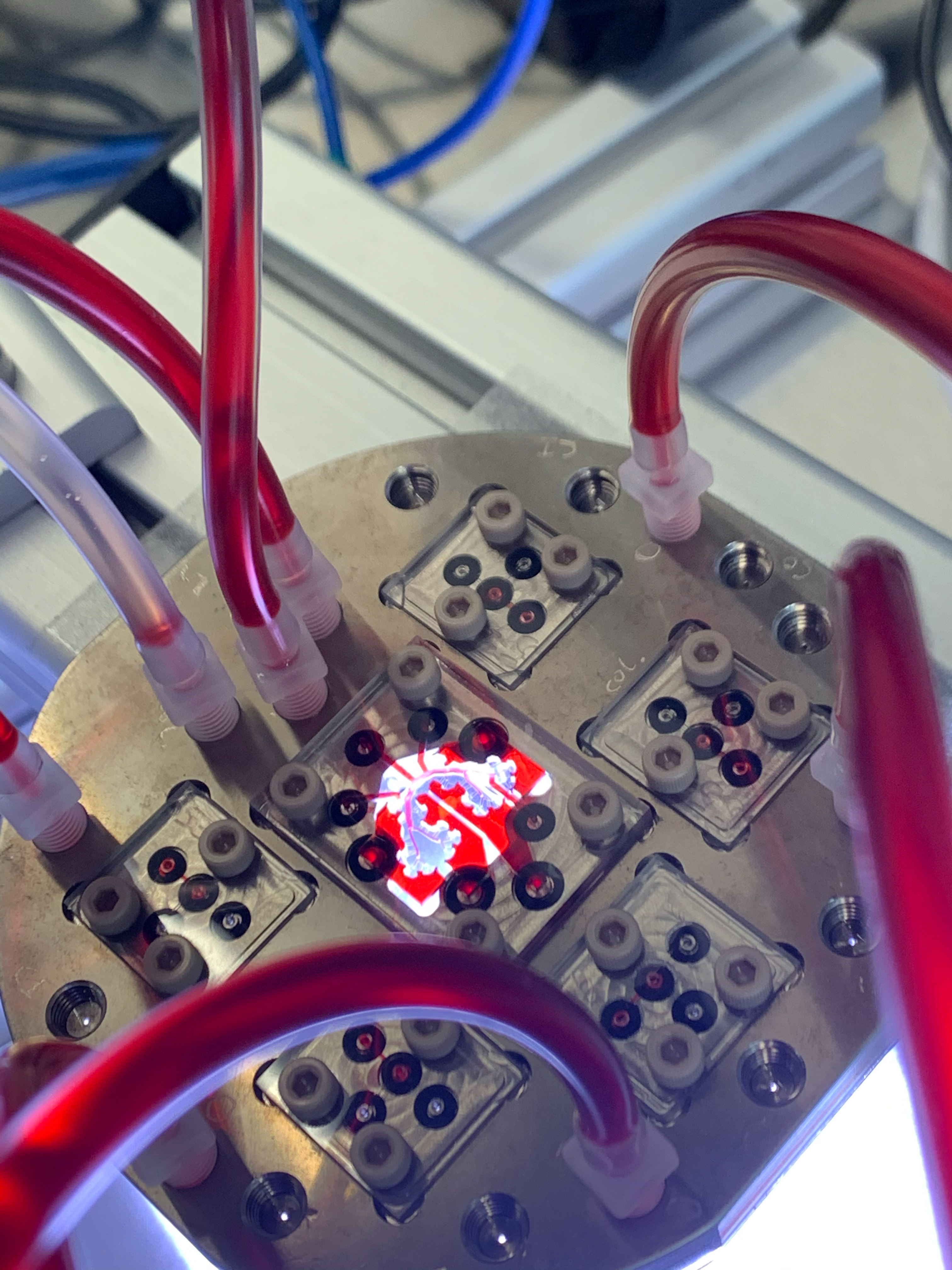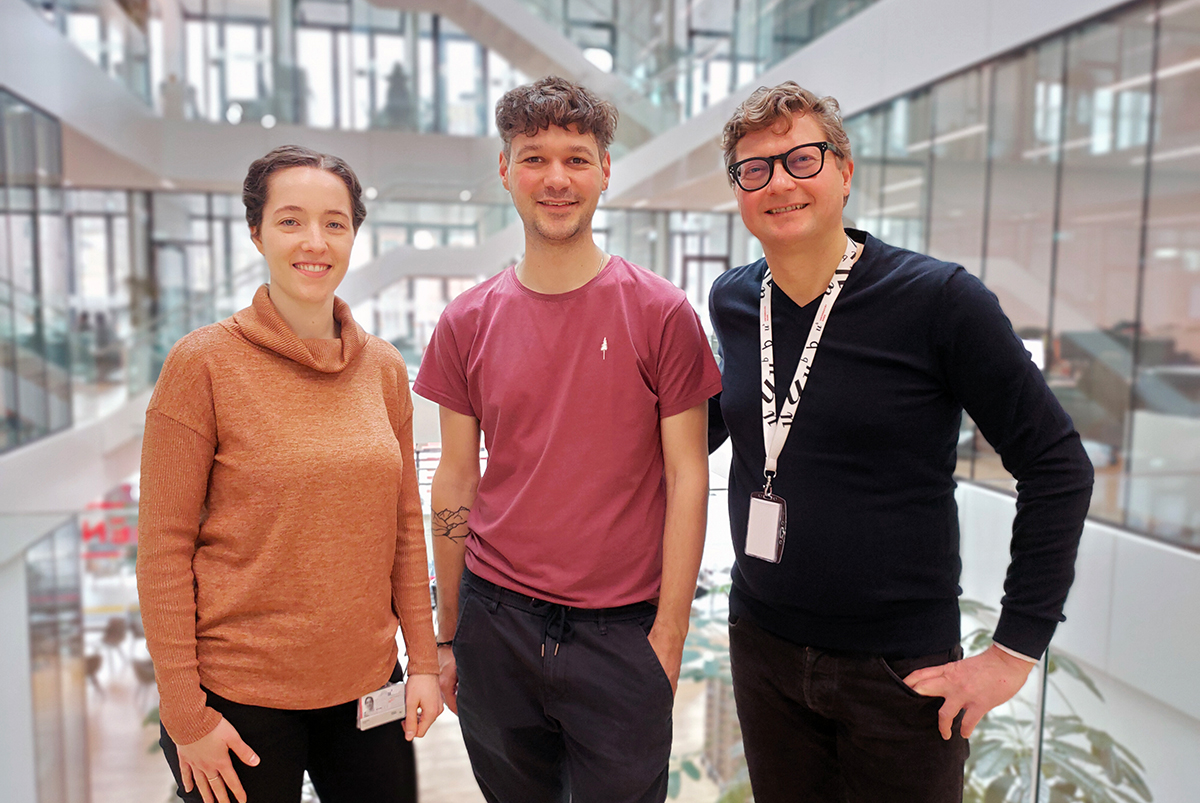Fighting heart attack down to the smallest vessels
Researchers in Bern have co-developed and tested a new method to combat the blockage of tiny coronary arteries after a heart attack. The new approach, born from a cooperation of engineers, clinicians, and industry, offers a treatment option to prevent the death of heart tissue after a heart attack, responsible for poor long-term patient health.
In myocardial infarction (heart attack), the supply of the heart muscle with oxygen and nutrients is blocked by an obstruction of a major coronary artery. Even after recanalization of this artery via stent, secondary obstructions in the cardiac microcirculation (Microvascular Obstruction, MVO) occur in 40-60% of all patients. This can lead to the death of heart tissue, with a negative impact on the long-term cardiovascular health of patients. Around 200,000 people are affected by this in Switzerland every year.
“MVO is an underdiagnosed condition because it cannot be easily detected during acute treatment in the catheter lab and to date there exists no established treatment for it,” says Dominik Obrist from the ARTORG Center for Biomedical Engineering Research, University of Bern. So far, only the bigger clogged arteries have been considered for heart attack treatment – partly because current catheters cannot reach into smaller vessels. A catheter is a thin tube that is inserted into the body to examine and treat the blood vessels.
"Tackling blockages in larger vessels does not prevent cardiac tissue further down the arterial tree from dying because the blood flow no longer reaches it," says Obrist. In a longstanding collaboration with clinical partners and a medical technology start-up, his research group for Cardiovascular Engineering at the ARTORG Center was able to develop a new technique that enables the diagnosis and treatment of MVO for the first time. The method is now being clinically tested and further refined.
Research at micrometer scale
To reach into the vessels, which are about as fine as a human hair (50 micrometers in diameter), the researchers first investigated the fluid mechanics of blood flow in the heart using a novel model mimicking vessels of the cardiac microcirculation. A first study with a newly designed balloon catheter demonstrated that MVO could be correctly diagnosed if the catheter was inflated at the site of the original obstructed artery. Measuring the pressure and resistance while infusing liquid with different flow rates into the arterial tree allowed to quantify hemodynamics and distinguish MVO from pressure relations present under healthy anatomic conditions.
In a second step, the scientists investigated how clot-dissolving drugs can be infused into these tiny branches. "When an artery is blocked, the blood will look for a different way to flow and avoid this congested branch. But this phenomenon makes it very hard to infuse dissolving medication into the blocked branch as it will directly be washed out into the healthy vessels beside it," explains Yannick Rösch, PostDoc at the ARTORG Center. "We were able to show that inflating the balloon catheter, which also administers the medication, delivers sufficiently high concentrations of this medication to the blocked vessels. This allows us to reach the blockage, and the medication dosage could even be reduced because we do not have the wash-out effect."
Academia, clinic and industry partner up to bring solutions to the patient
“Our project is a prime example of networked interdisciplinary collaboration at the Bern Medical Hub - between researchers at the University of Bern, clinical experts of the Bern University Hospital, and local industry, together with the expertise of further Swiss partners to bring solutions to patients as quickly as possible,” says Obrist. This networked research into MVO led to the founding of the start-up CorFlow Therapeutics AG. Its technology makes it possible to diagnose MVO during the initial treatment of heart attack patients in the catheter laboratory and to start MVO treatment immediately after stent placement. Academic partners include the ETH Zurich, the University of Zurich, the University of Applied Sciences OST in Buchs (SG) and the Cardiology Department at Inselspital Bern.
Along with in vivo testing of the new medical device as well as a first-in-human clinical trial, the research team refined their experimental model with biological expertise and recently investigated the effectiveness of clot-dissolving drugs on micro-blood clots in a microfluidic chip, which simulates the fluid mechanics within the smallest blood vessels. "The drugs used to dissolve blood clots have severe side effects in high doses. We have now been able to show that even the smallest amounts of these known and clinically used drugs are able to dissolve individual micro blood clots," says Anastasia Milusev, research associate at the ARTORG Center. "This enables the targeted and low-dose dissolution of blood clots for the first time. Now, we need to put all the pieces of the puzzle together to make therapy for MVO available to patients.”
Publications:Rösch Y., Stolte T., Weisskopf M., Frey S., Schwartz R., Cesarovic N., Obrist D. Efficacy of catheter-based drug delivery in a hybrid in-vitro model of cardiac MVO with porcine microthrombi, Bioeng Transl Med.2023; e10631. https://doi.org/10.1002/btm2.10631 Rösch Y., Eggenberger D., Kuster Y., Widmer L., Frey S., Schwartz R., Nef C., Ulmer J., Obrist D. Enhanced Drug Delivery for Cardiac Microvascular Obstruction with an Occlusion-Infusion-Catheter, Ann Biomed Eng, 2023. https://doi.org/10.1007/s10439-023-03142-z Thirugnanasambandam M., Frey S., Rösch Y., Mantegazza A., Clavica F., Schwartz R., Cesarovic N., Obrist D. Effect of Collateral Flow on Catheter-Based Assessment of Cardiac Microvascular Obstruction, Ann Biom Eng, 2022. https://doi.org/10.1007/s10439-022-02985-2 |
Research group Cardiovascular EngineeringThe ARTORG´s Cardiovascular Engineering (CVE) group studies cardiovascular flows and diseases, such as valvular heart disease and heart attack. Its research aims to improve the long-term durability and biocompatibility of implants and to develop novel diagnostic and therapeutic tools for clinical practice. CVE translational research projects address immediate clinical needs that were identified together with clinical partners in Cardiology and Cardiovascular Surgery at Inselspital, who are closely integrated in the project teams from start to finish. The team operates an experimental flow lab with modern measurement technology and a computational lab to model flows in the heart and blood vessels. Its experimental facilities include high-speed cameras and laser-based methods for three-dimensional flow quantification. The group develops and uses custom-tailored computer models and supercomputers to study biomedical flow systems with fluid-structure interaction. |
2024/03/19




